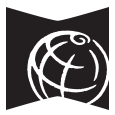Alaska-Yukon-Pacific Digital Collection
Preview up to 100 items from this collection below. Seattle’s first World’s Fair, the 1909 Alaska-Yukon-Pacific Exposition, made Seattle a Pacific Rim gateway. View materials from SPL and the Museum of History and Industry in this collection.
-
"Exposition notes," The Coast, March 1907
A brief article reporting on the progress being made in terms of appropriation of funds to the A.Y.P.E. by participating states. Also includes biographical notes about the new director of works for the Exposition, Frank P. Allen, Jr. Coast 13.3 (March 1907): 202, illustrated.
Identifier: spl_ayp_179583_mar1907
Date: 1907-03
View this item -
Souvenir Taft Day official program, September 30, 1909
"Official Daily Programme" for 30 September 1909. Schedule for Taft Day, Sacramento Day, Live Stock Day, and Ellery Band performance. Illustration on cover of William H. Taft, 16 pages.
Identifier: mohai_ayp_2006.3.34.2
Date: 1909-09-30
View this item -
"Opening of the A.-Y.-P. Exposition," The Coast, June 1909
An article describing the opening day ceremonies of the A.Y.P.E. The author lauds the superiority of A.Y.P.E. to other world fairs. Also describes features of each building as well as landscaping details. A description of the exposition flag and the origin of the flagstaff as well as a description of the speech by Senator Henry Piles are included. Coast 17.6 (June 1909): 370-78, illustrated.
Identifier: spl_ayp_179583_jun1909
Date: 1909-06
View this item -
"In the shadow of the cross: the unfinished and unexplained miracle picture by Henry Hammond Ahl" exhibit pamphlet,1909
Pamphlet describing the unusual phenomenon reported to have been seen in the painting "In the Shadow of the Cross" by Henry Hammond Ahl. Includes excerpts from reviews of the painting from various newspapers around the country. 1 folded sheet which, when folded, creates 4 pages, 15 cm.
Identifier: spl_ayp_2227336
Date: 1909?
View this item -
"The Alaska-Pacific-Yukon Exposition," The Coast, December 1906
An article containing two parts; the first part is a transcript of an essay/address by J. E. Chilberg on the purpose and scope of the A.Y.P.E. In it he notes "the Alaska-Yukon-Pacific Exposition will have for its prime motive the exploitation of the resources of the Pacific with Alaska as a center" (p. 289). The second part of the article concludes with a description of Alaska and other Pacific states and comments on the suitability of the University of Washington for an exhibition of this kind. Coast 12.6 (December 1906): 289-92 illustrated.
Identifier: spl_ayp_179583_dec1906
Date: 1906-12
View this item -
Invitation to the celebration of McMinnville Day at the Oregon State Building, July 10, 1909
Printed invitation card for the reception with the program to be held at 11:00 and the reception to be held from 3:00 to 5:00.
Identifier: mohai_ayp_2006.3.46.9
Date: 1909-07-10
View this item -
"Seattle opens doors of country to Japanese commissioners," Pacific Northwest Commerce, October 1909
An article detailing the Northwest stops on a 3-month tour of the United States by the Honorary Japanese Commercial Commission, chaired by Baron E. Shibusawa. The commission's itinerary included visits to the A.Y.P.E. on September 1 and on Japan Day, September 4. Pacific Northwest Commerce magazine (official publication of the Seattle Chamber of Commerce) 1.4 October 1909: 11-19, illustrated.
Identifier: spl_ayp_362611_oct1909_11
Date: 1909-10
View this item -
"Ground plans of the exposition," The Coast, February 1907
A brief article in which the design for the preliminary ground plan for the A.Y.P.E. by J. C. Olmsted is presented and discussed. From page 79, "twelve large exhibit palaces arranged in an unique manner will form the nucleus of the exposition." Includes ground plan. Coast 13:2 (February 1907): 78-79, illustrated.
Identifier: spl_ayp_179583_feb1907
Date: 1907-02
View this item -
Township Plats of King County, Washington Territory - Page 06, Township 22N, Range 3E
This atlas shows early land ownership for King County, Washington, providing names and property boundaries of original purchasers, grantees, claimants, etc.
Identifier: spl_map_218451_P06_T22N_R3E
Date: 1889
View this item -
Township Plats of King County, Washington Territory - Page 43, Township 22N, Range 8E
This atlas shows early land ownership for King County, Washington, providing names and property boundaries of original purchasers, grantees, claimants, etc.
Identifier: spl_map_218451_P43_T22N_R8E
Date: 1889
View this item

